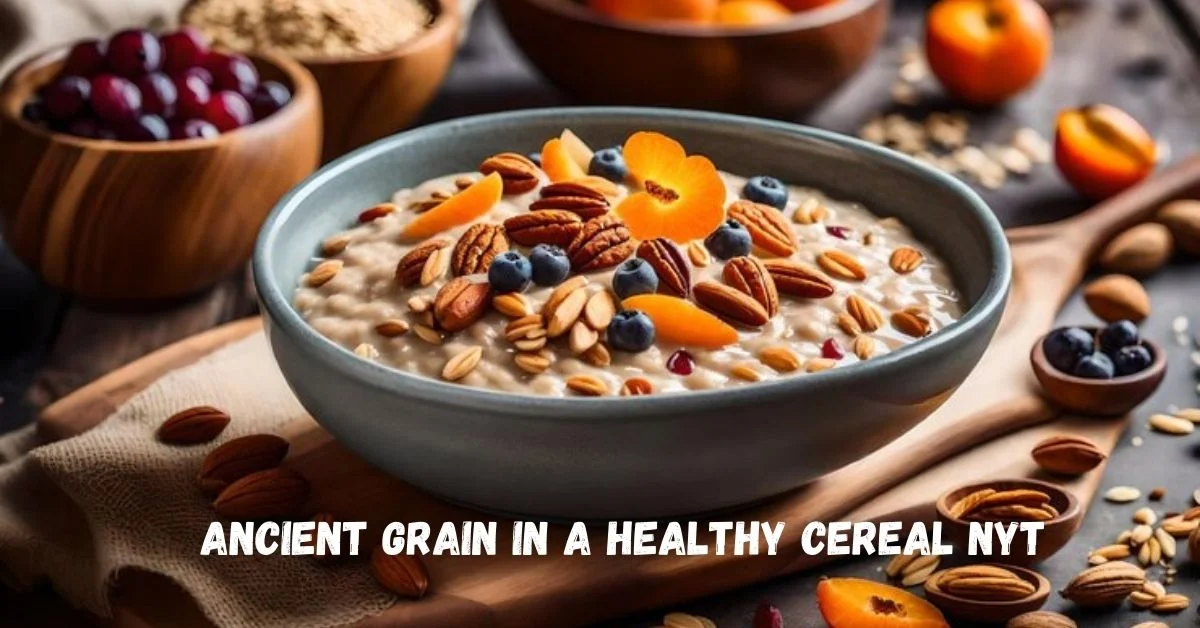Ancient grains are grains that have remained largely unchanged over the last several hundred years. Unlike modern grains, which have been selectively bred to improve yield, ancient grains have retained their original structure and nutritional profile.
History of Ancient Grains
Origins and Evolution
Ancient grains have been cultivated for thousands of years, dating back to early civilizations. These grains were a staple in the diets of many cultures, providing essential nutrients and sustenance.
Cultural Significance
Ancient grains hold significant cultural importance. They were often used in traditional dishes and rituals, symbolizing prosperity and health.
Types of Ancient Grains
Quinoa
Quinoa is a highly nutritious grain known for its high protein content and versatility in cooking.
Amaranth
Amaranth is another protein-rich grain that is also gluten-free, making it suitable for those with gluten sensitivities.
Farro
Farro is an ancient grain with a nutty flavor and chewy texture, often used in salads and soups.
Spelt
Spelt is a type of wheat with a slightly sweet flavor, commonly used in baking.
Millet
Millet is a small, round grain that is rich in minerals and easy to digest.
Teff
Teff is a tiny grain native to Ethiopia, known for its high iron content and use in traditional dishes like injera.
Sorghum
Sorghum is a drought-resistant grain that is rich in antioxidants and used in a variety of dishes.
Nutritional Benefits of Ancient Grains
High Fiber Content
Ancient grains are typically high in fiber, which aids in digestion and helps maintain a healthy gut.
Rich in Protein
Many ancient grains, such as quinoa and amaranth, are excellent sources of plant-based protein.
Packed with Vitamins and Minerals
Ancient grains are rich in essential vitamins and minerals, including iron, magnesium, and B vitamins.
Low Glycemic Index
Ancient grains have a low glycemic index, which helps regulate blood sugar levels and provides sustained energy.
Ancient Grains vs. Modern Grains
Nutritional Comparison
Ancient grains generally offer a more robust nutritional profile compared to modern grains, which are often stripped of their nutrients during processing.
Health Impacts
Consuming ancient grains can lead to better health outcomes, including reduced risk of chronic diseases and improved overall well-being.
Incorporating Ancient Grains into Your Diet
Breakfast Cereals
Ancient grains make for a nutritious and hearty breakfast cereal option.
Baking with Ancient Grains
Using ancient grains in baking can enhance the nutritional value of bread, muffins, and other baked goods.
Salads and Side Dishes
Ancient grains add texture and nutrients to salads and side dishes.
Ancient Grains in Popular Cereals
Brands and Products
Several brands have introduced cereals featuring ancient grains, such as Nature’s Path and Kashi.
Taste and Texture
Ancient grain cereals often have a distinct taste and texture, providing a unique eating experience.
Health Benefits of Eating Ancient Grains
Improved Digestion
The high fiber content in ancient grains promotes healthy digestion and prevents constipation.
Better Heart Health
Ancient grains can help lower cholesterol levels and reduce the risk of heart disease.
Weight Management
The fiber and protein in ancient grains help keep you full longer, aiding in weight management.
Blood Sugar Control
Ancient grains’ low glycemic index helps stabilize blood sugar levels, making them a good choice for people with diabetes.
Recipes Featuring Ancient Grains
Breakfast Bowl
A nutritious breakfast bowl featuring quinoa, fresh fruits, and nuts.
Grain Salad
A hearty grain salad with farro, vegetables, and a tangy dressing.
Ancient Grain Bread
A wholesome bread made with a mix of spelt and other ancient grains.
Expert Insights on Ancient Grains
Nutritionists and dietitians often recommend incorporating ancient grains into your diet for their numerous health benefits.
Common Misconceptions About Ancient Grains
Are They Hard to Cook?
While some people think ancient grains are difficult to prepare, many are quite easy to cook and can be used in a variety of dishes.
Do They Taste Bland?
Ancient grains have a unique flavor profile that can enhance many dishes.
FAQs About Ancient Grains
What are the best ancient grains for beginners?
Quinoa and farro are great starting points for those new to ancient grains.
Can ancient grains help with weight loss?
Yes, their high fiber and protein content can aid in weight management.
Are ancient grains gluten-free?
Some ancient grains, like quinoa and amaranth, are gluten-free, while others, like spelt and farro, contain gluten.
Conclusion
Ancient grains offer a wealth of nutritional benefits and are a versatile addition to any diet. Whether you’re looking to improve your digestion, manage your weight, or simply enjoy a hearty and healthy meal, ancient grains are worth exploring.
SEO Meta Description: Discover the health benefits of ancient grains in healthy cereals. Learn about their nutritional value, types, and how to incorporate them into your diet.
SEO Optimized Title: Ancient Grains in Healthy Cereal: Benefits, Types, and Recipes
Slug: ancient-grains-healthy-cereal

